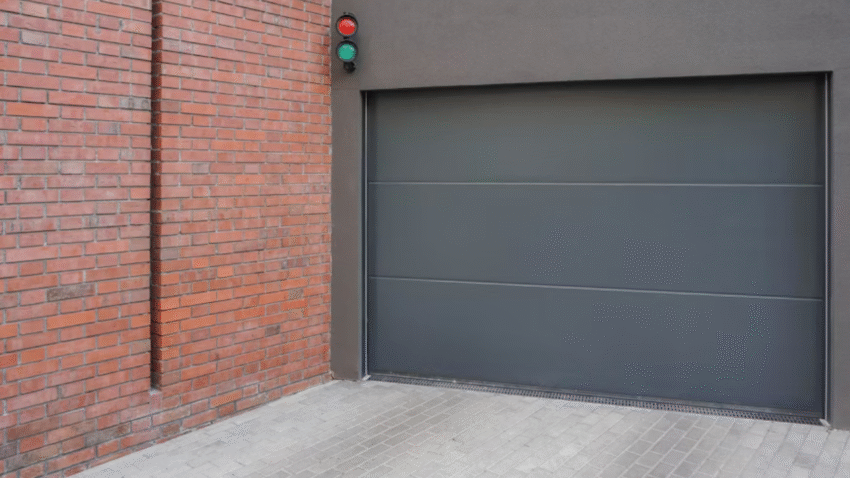Introduction
Noticed cracks forming in your garage floor? Over time, these small fractures can grow into bigger problems, leading to moisture damage, structural issues, and costly repairs. Learning how to seal garage floor cracks to prevent damage is a simple yet essential maintenance task that protects your garage’s foundation and keeps the space safe and functional. With the right materials and a bit of DIY effort, you can stop cracks from spreading and extend the life of your floor.
Why Sealing Garage Floor Cracks Matters
A cracked garage floor isn’t just an eyesore—it’s a sign your concrete is under stress. Left untreated, cracks can cause:
- Water infiltration – Moisture seeps in, leading to mold, mildew, or freeze-thaw damage.
- Structural deterioration – Over time, cracks weaken the concrete slab.
- Pest intrusion – Small gaps become entry points for insects or rodents.
- Staining and dust – Cracks trap dirt, oil, and other debris.
- Reduced property value – A damaged garage floor can make your home less appealing to buyers.
By sealing cracks early, you protect your garage from long-term issues and keep it looking clean and professional.
Step-by-Step Guide to Sealing Garage Floor Cracks
1. Identify the Type of Crack
Before you start, determine the type and severity:
- Hairline cracks – Very thin, usually cosmetic but still worth sealing.
- Shrinkage cracks – Caused by concrete curing; often harmless but can widen over time.
- Settlement cracks – Result from ground shifting; may require professional assessment if severe.
If the crack is wider than ¼ inch or accompanied by uneven slabs, consider consulting a contractor.
2. Gather Your Materials and Tools
You’ll need:
- Wire brush.
- Shop vacuum or broom.
- Chisel and hammer (for widening deep cracks slightly).
- Concrete crack filler or epoxy repair compound.
- Caulking gun (for certain fillers).
- Putty knife or trowel.
- Safety gear: gloves, goggles, dust mask.
3. Clean the Crack Thoroughly
Dirt, dust, and loose debris prevent sealant from bonding.
- Use a wire brush to scrub inside the crack.
- Vacuum out all debris with a shop vac.
- If oil stains are nearby, clean with a degreaser so the repair material adheres properly.
4. Widen and Deepen if Necessary
For cracks narrower than ⅛ inch, use a chisel to slightly widen the opening to about ¼ inch. This helps the filler grip the sides better and ensures a longer-lasting seal.
5. Choose the Right Crack Filler
Select a product based on crack size and usage:
- Concrete caulk – Flexible, good for hairline or narrow cracks.
- Epoxy repair compound – Strong and durable for larger cracks.
- Polyurethane sealant – Excellent flexibility for areas with temperature fluctuations.
6. Apply the Filler
- Load the filler into a caulking gun (if applicable) and apply along the crack.
- For epoxy, mix as directed and press it into the crack with a putty knife.
- Overfill slightly, as some materials shrink while curing.
7. Smooth the Surface
Use a putty knife or trowel to level the filler with the surrounding floor. This prevents tripping hazards and makes future cleaning easier.
8. Allow to Cure
Follow the manufacturer’s recommended curing time—usually 24 to 48 hours. Avoid parking vehicles or placing heavy items on the repaired area until it’s fully cured.
9. Consider Sealing the Entire Floor
Once cracks are repaired, applying a concrete floor sealer can protect against future damage, stains, and moisture. Epoxy coatings also improve appearance and durability.
Common Mistakes to Avoid
- Skipping cleaning
- Mistake: Filling over dirt or dust.
- Solution: Always clean cracks thoroughly before applying filler.
- Using the wrong filler
- Mistake: Applying lightweight caulk to a large, deep crack.
- Solution: Match the filler type to crack size and expected wear.
- Not addressing underlying causes
- Mistake: Sealing cracks without checking for water leaks or foundation movement.
- Solution: Fix the root cause to prevent cracks from returning.
- Failing to let it cure properly
- Mistake: Driving over repairs too soon.
- Solution: Follow curing times carefully.
- Ignoring follow-up maintenance
- Mistake: Letting new cracks go untreated.
- Solution: Inspect your garage floor twice a year and repair promptly.
Extra Garage Tips & Hacks
- Use a crack-chasing blade on an angle grinder for clean, uniform edges before filling.
- Work in dry conditions – Moisture in cracks can prevent filler from adhering.
- Add a floor mat in high-traffic areas to reduce wear on repaired spots.
- Related read: Check out our guide on maximizing garage floor lifespan.
Conclusion
Sealing garage floor cracks is an easy, affordable DIY project that can save you from costly repairs later. By identifying cracks early, cleaning them thoroughly, choosing the right filler, and following proper application techniques, you can keep your garage floor strong, safe, and looking great.
Pro Tip: Mark your calendar for a twice-yearly garage floor inspection—one in spring and one in fall—to catch new cracks before they become big problems.
